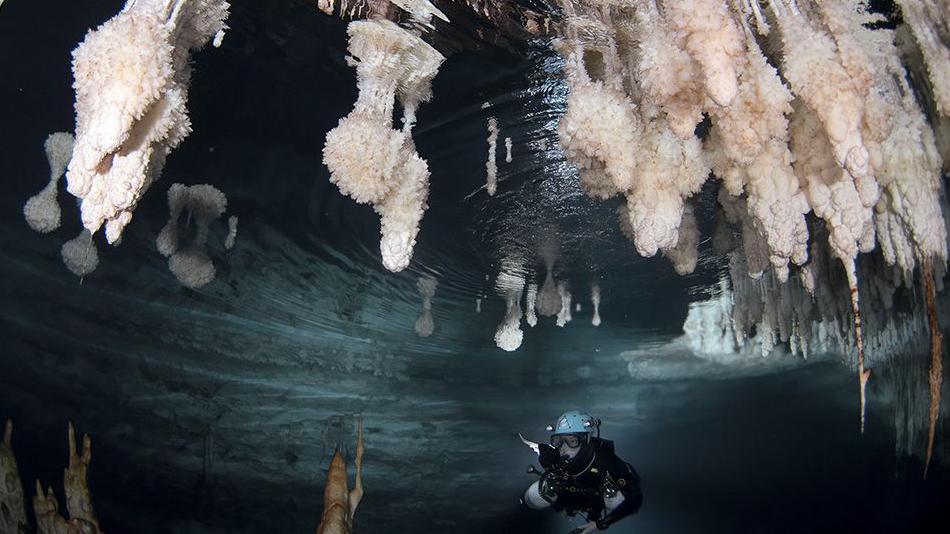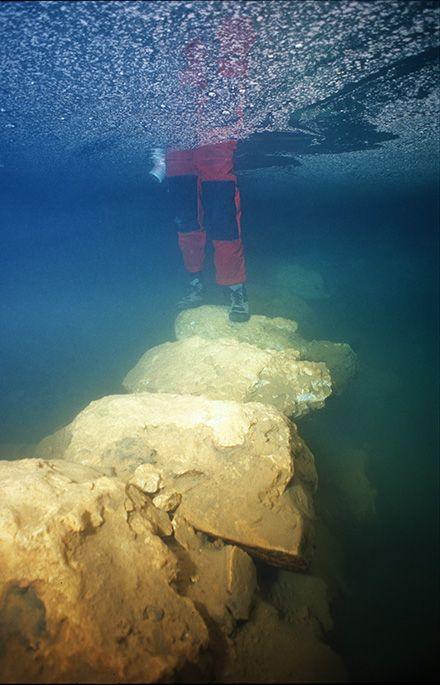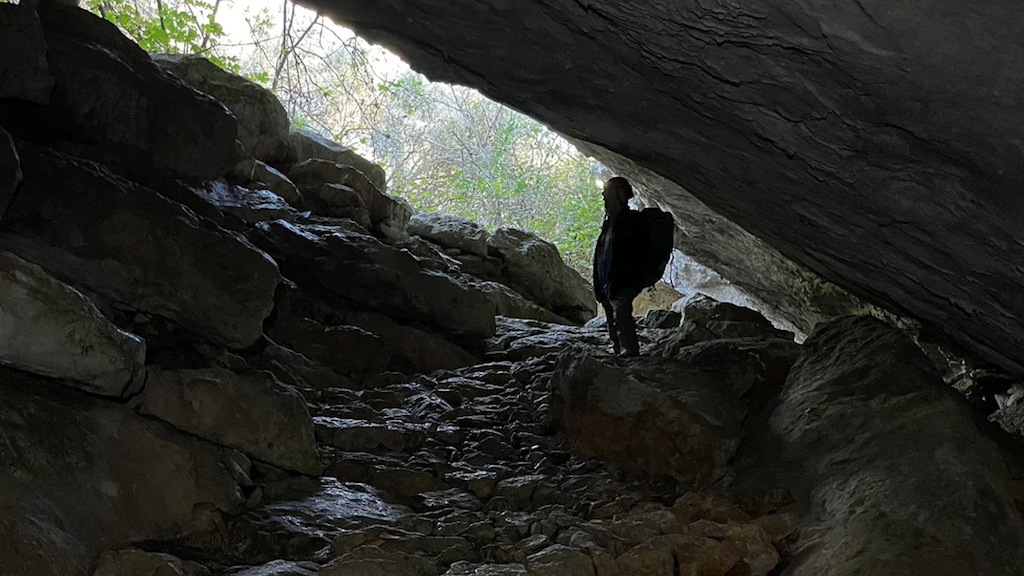New discovery in an ancient cave could change Mallorca's history

These overgrowths were studied to determine the age of the bridge
- Published
An ancient bridge discovered in a cave on Mallorca has revealed that humans settled on the Spanish island much earlier than previously thought.
Pinpointing when humans first made the Mediterranean islands their home is challenging for archaeologists, due to limited evidence.
Now a new study, led by the University of South Florida, has found evidence of human activity inside the Genovesa Cave dating back to 6,000 years ago.
This is more than two thousand years earlier than previous estimations.
More scientific discoveries!
- Published30 April 2024
- Published27 August 2024
- Published2 September 2024

Close-up view of the submerged stone bridge
Mallorca is the sixth largest island in the Mediterranean, but was among the last to have humans settle and live there.
Previous research suggested human presence as far back as 9,000 years but inconsistencies and poor preservation of items, like bones and pottery, led to doubts.
More recent studies used charcoal, ash and bones found on the island to create a timeline of human settlement, estimated to have started around 4,400 years ago.
How was the Mallorca cave bridge studied?
The cave, near Mallorca’s coast, has passages that are now flooded due to rising sea levels, with white bands forming when the sea level is high.
These formations, along with a lightly-coloured band on the bridge, can help to track historical changes and date when it was built.
By analysing this evidence, the team discovered the bridge was constructed nearly 6,000 years ago.

The entrance to the Genovesa cave in Mallorca
What can the Mallorca cave bridge tell us about human history and Earth?
Professor Bogdan Onac said: "The presence of this submerged bridge and other artifacts indicates a sophisticated level of activity, implying that early settlers recognized the cave's water resources and strategically built infrastructure to navigate it.”
Professor Onac says it will help to uncover historical truths and advance our understanding of human history.
It's also thought the site could help us understand more about challenges the Earth faces such as climate change. Studies will continue at the cave systems to identify preindustrial sea levels - before the industrial revolution - and examine the impact of global warming.
Interesting animal stories
- Published30 August 2024

- Published30 August 2024

- Published29 August 2024

